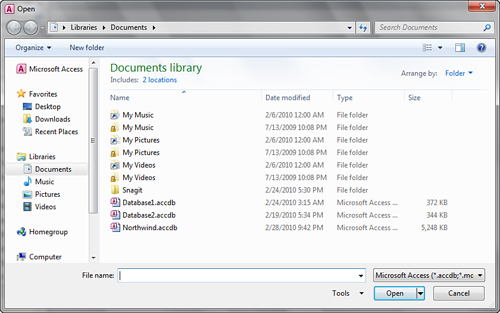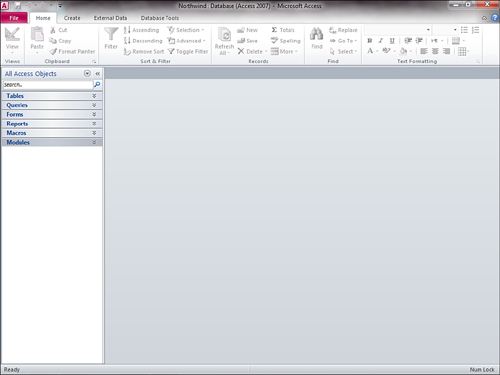Before we dive right into creating our own databases,
we’re going to start by working with an existing database. To work with
an existing database, you must first open it.
Open an Existing Database
To open an existing database:
1. | From File tab of the Ribbon (see Figure 1)
select one of the recently opened databases, or click Open to view
additional files. If you click Open, the Open dialog appears (see Figure 2).


|
2. | Locate the file you want to open and then click Open. Access opens the file, and the desktop appears as in Figure 3.

|
Your desktop might not
look exactly like the figure. This is because Access remembers the state
of the Navigation Pane when you last had the database open. For
example, if you had the list of tables expanded the last time the
database was open, Access will show the list of tables in the Navigation
Pane the next time that you open the database. In fact, you can
collapse the Navigation Pane entirely by using the Shutter Bar
Open/Close Button at the top of the Navigation Pane.